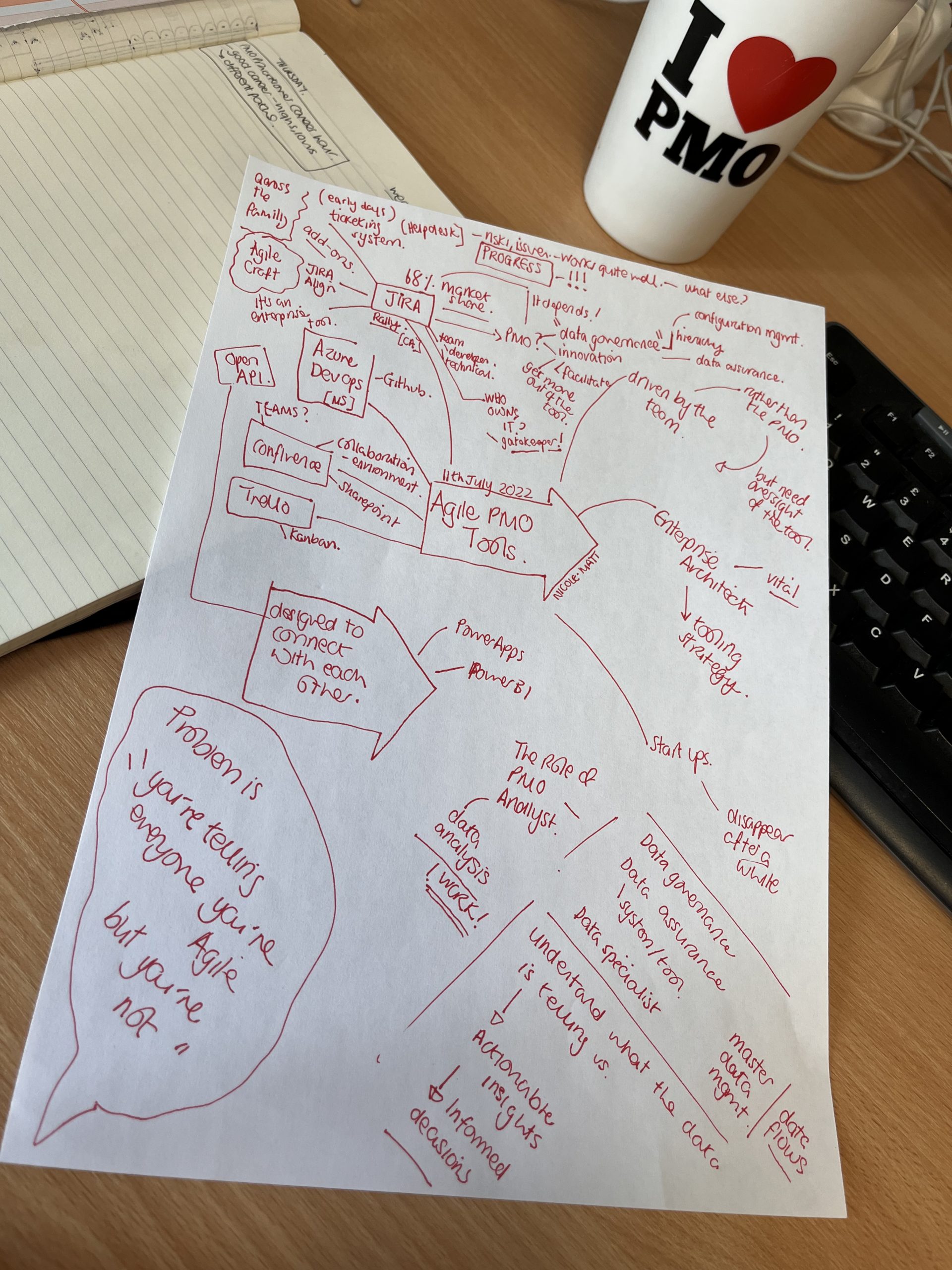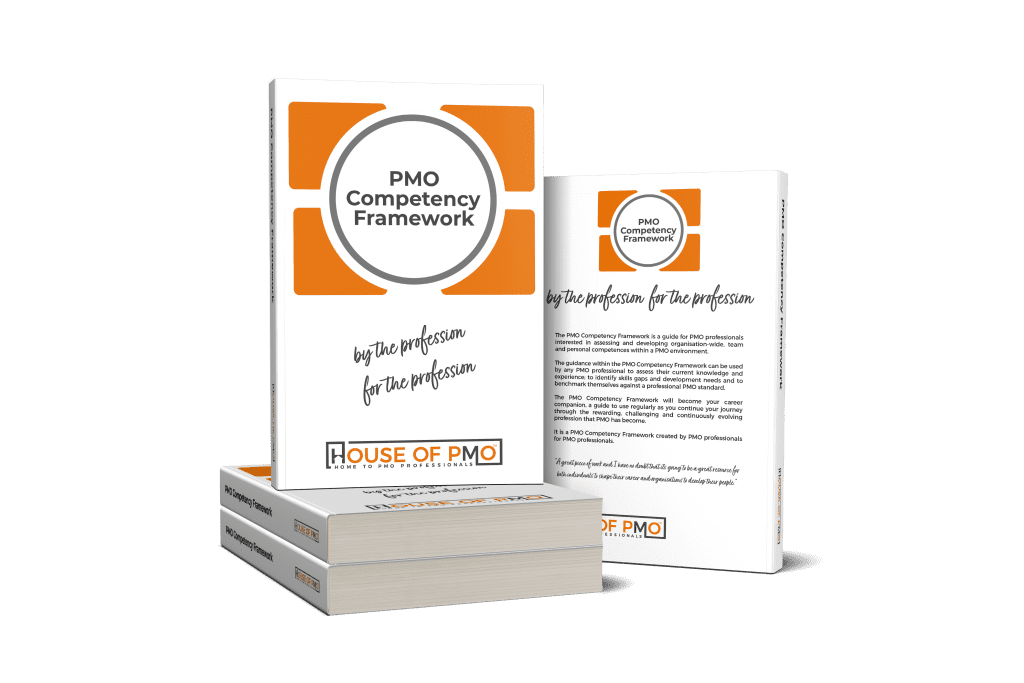In this session, Matthew was joined by another lodger, Nicole Reilly. Together they talked about the different Agile related tools that are available and what the PMO needs to know.
There are literally hundreds of different tools out there that are used by Agile teams. There are also many different options to extract data which is then used by management teams to understand what progress is being made and what decisions and actions are needed to be taken.
This session is more conversational in style rather than a presentation of which tools are the best – there are no demos. We did focus on the most common ones in use – JIRA, Confluence, Azure Dev Ops and Trello and learn a few things along the way. The main take away is – there is no silver bullet when it comes to Agile tools and there certainly isn’t one tool that can support Agile and waterfall delivery together.
Take a look at the session and check out the main takeaways below.
The Session
Please be aware, the video includes subtitles [click CC]
The Notes

The Main Takeaways
 There are literally hundreds of start-ups creating new tools for the Agile age – its something to be wary about because many of them (if they’re any good) tend to get subsumed by the larger players in the marketplace aka like JIRA.
There are literally hundreds of start-ups creating new tools for the Agile age – its something to be wary about because many of them (if they’re any good) tend to get subsumed by the larger players in the marketplace aka like JIRA.
JIRA is the most popular tool in the marketplace today (taking 68% of the market share) and in its simpliest form – it’s a tool that is used at the Agile team level that helps manage progress.
 When talking about Agile tools – we’re generally talking about tools that are being used at the Agile team level – the use of the tool is driven by the team and not the PMO. Having said that, any tool being used in organisations today do need some governance and structure – and some assurance in place to make sure they’re being used correctly.
When talking about Agile tools – we’re generally talking about tools that are being used at the Agile team level – the use of the tool is driven by the team and not the PMO. Having said that, any tool being used in organisations today do need some governance and structure – and some assurance in place to make sure they’re being used correctly.
That’s where the PMO can be providing a role – around data governance, data tool assurance and data analysis. We’ve mentioned this many times before – including in the Trends each year – the PMO really does need a data specialist as part of the team. If we’re trying to understand tools like JIRA today, what tool will it be in 12, 18 months, three years time? You can also check out the Inside PMO report we did about data too here.
 Does your organisation have an enterprise architect? They probably reside in the IT department and they are the ones that usually have responsibility for the organisation’s tooling strategy. With the changing nature of data use in the organisation it stands to reason that any tools used in change delivery will most likely have a connection with other enterprise level tools.
Does your organisation have an enterprise architect? They probably reside in the IT department and they are the ones that usually have responsibility for the organisation’s tooling strategy. With the changing nature of data use in the organisation it stands to reason that any tools used in change delivery will most likely have a connection with other enterprise level tools.
The PMO needs to understand the bigger picture of data in the organisation – to understand how data is connecting and fitting together. There is something called Master Data Management (MDM) which you might want to consider having a read at. Start with Wikipedia and then perhaps check this article out too.
 The big question for a lot of PMO practitioners right now is – how do we take different types of data – from Agile and the more traditional waterfall – and create a consolidated view which then allows us to compare apples and pears!
The big question for a lot of PMO practitioners right now is – how do we take different types of data – from Agile and the more traditional waterfall – and create a consolidated view which then allows us to compare apples and pears!
The solution really lies with the mindset of the organisation. The problem is many organisations are going Agile or are already Agile but the reality is they’re not really. There’s still traditional thinking and approaches being used.For many organisations it is still early days, trying to find an approach that works at all levels – agility at project, programme, portfolio and enterprise is no small feat. There has always been a good saying in project management – it’s people and process first, tools come when you’ve got the first two somewhere on the road to maturity.
I mean, why are we trying to compare apples and pears anyway?
 If your organisation is Microsoft led (and let’s face it, most are) the rise of Power Apps and Power BI is helping when it comes to creating unique dashboards and reports (unique to your organisation).
If your organisation is Microsoft led (and let’s face it, most are) the rise of Power Apps and Power BI is helping when it comes to creating unique dashboards and reports (unique to your organisation).
Your PMO should be able to utilise these tools – to extract data from whatever other tools you are using – to provide somekind of dashboard that executives can use.
It’s worth remembering that the PMO’s job is all about providing information to the right people at the right time so they can make a decision and take action. We’ve just got to work out how to get that information from all the data points we have – regardless of which tool is being used. Thank goodness for open APIs, now we just need a good PMO (Data) Analyst to work out the requirements!
Here’s the tools we talked about so you can check them out too:
https://azure.microsoft.com/en-us/services/devops/#overview
https://www.atlassian.com/software/jira/work-management
https://www.atlassian.com/software/confluence



